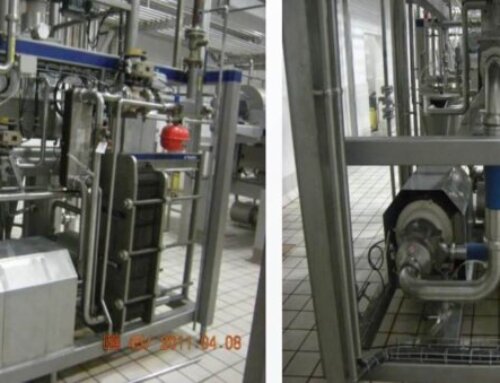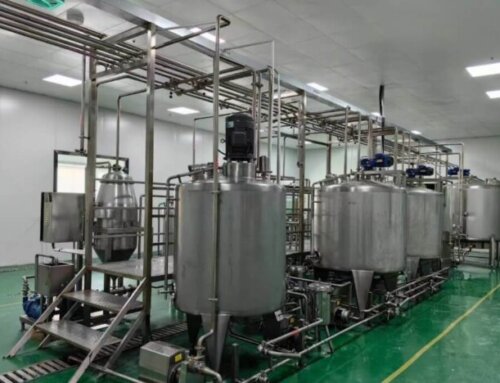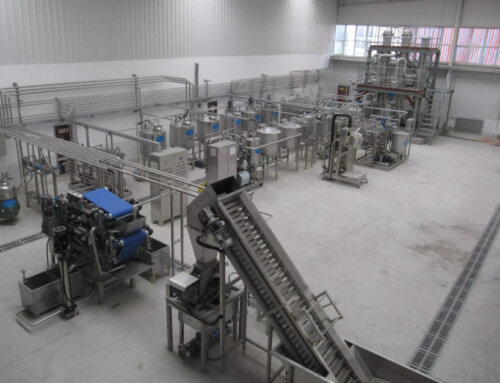Plant-Based Yogurt Processing Line Description
- The plant-based yogurt can be also called fermented plant-based products, it refers to the plant-based materials(oats, almond, coconut, soybean, cashew nuts, etc.) after grinding into milk, then fermenting milk into yogurt-style products, as the end products are similar in taste, appearance, and texture with traditional dairy yogurt products, so it is also called plant-based yogurt products.
- As health concerns rise globally and environmental sustainability, pure natural and zero gas emissions foods and drinks are the new trends, the plant-based fermented yogurt products have unparalleled advantages compared to animal dairy yogurt products, and are increasingly available around the world.
- The plant-based yogurt processing steps are plant-based product grinding, separation, plant-based milk formulation, milk heat treatment, fermentation and filling.
- The capacity for plant-based yogurt processing line is from 500L/H to 5000L/H, and the end products can be filled into cups, and bottles.
- Because of the special characteristics of plant ingredients, such as low sugar content, and heat sensitivity, so when processing plant-based products into yogurt, there are also some challenges: product viscosity after fermentation, heat treatment method and fermentation parameter, these are key factors that can determine whether you can produce the high-quality products.

Plant-Based Yogurt Processing Ingredients Introduction
The plant-based yogurt needs a certain viscosity, texture, mouth feel and appearance to attract consumers, while most of the plant-based ingredients do not have enough sugar to ferment into acid to make the end products have good viscosity, so when for formulation, adding suitable sugar and thickeners is a key process for crafting the end products. Here give you a brief introduction of what ingredients need to add when for formulation:
Starch: Natural and modified starch can be added to plant-based products to increase the viscosity of the yogurt. The starch will be dissolved in the high shear emulsifying tank in the base before heat treatment. Some starches will create high viscosity before fermentation, while others will have an effect after cooling in the package.
Pectin and gum: Pectin and gum are often used together in plant-based yogurt-style products to increase viscosity and water-holding capacity (stability), it is the main thickener agent in plant-based yogurt production.
Sugar: Depending on the raw plant material, sucrose, glucose and maltose are commonly added sugars. If the raw material already contains a lot of starch (e.g. oats or rice), the sugar is produced from the starch with an enzymatic process while manufacturing the plant base. The sugar composition can be further controlled by the choice of enzymes. The fermentation culture is often dependent on a specific sugar for its functionality.
Other ingredients: Fats, emulsifiers, flavors and aromas, and fruit particles can also be added to plant-based yogurt products to increase nutrition and flavor.
Plant-Based Yogurt Processing Key Process Introduction
Plant extracting system
The plant pretreatment system mainly includes plant ingredients soaking, wet grinding/extracting, filtration, enzymatic treatment(for starch-rich materials such as oats, rice, quinoa, etc.), decanter separation, etc. This process system is making the raw plants into slurry or pulp, and it is the same process when you make plant-based milk products.

Plant base formulation and mixing system
The ingredients will be added to the plant-based products to formulate certain viscosity and flavor. Different plant-based products need to different ingredients, all the ingredients will be dissolved into the high shear mixing tank.
In oat-based yogurt production, the enzymatic hydrolysis process can decompose the starch into sugar, so less sugar can be added, but as the fats in the oat base are little, so the oil can be dosed.
In soya-based yogurt production, enough sugar needs to add to the soya base, so when fermentation, there is enough starch that can be converted into acid and increase the viscosity of the final products.
In almond yogurt production, due to the low starch/high-fat content in almonds, it also needs to add enough sugar and thickener into the base to achieve viscosity.

Plant base heat treatment system
When all the ingredients are mixed, then the product base needs to heat treatment. The purpose of the heat treatment is mainly to kill all pathogenic bacteria and swelling of the stabilizer and starch.
The heat treatment temperature and holding time strongly depend on what thickeners and stabilizers you use. Some thickeners cannot tolerate high temperatures, while others need a very long holding time to be activated, so when considering the heat treatment, need to consider both factors: food safety and thickeners’ temperature tolerance. The common heat treatment process for yogurt products is 90℃ for 5 min, at this condition, the heat treatment can denature protein and optimize the texture of the end products.
We usually use the plate or tubular sterilizer to do the heat treatment according to the product base viscosity, and after sterilizing, the plant-based products will be cooled to 40℃ and then pumped into fermentation tanks.

Plant-based yogurt fermentation
A bacterial culture, also called a starter culture, is added to heat-treated plant-based products for fermentation. These cultures can be a mixture of Streptococcus thermophilus and Lactobacillus bulgaricus, but other cultures are also commonly used in plant-based products. During fermentation, bacteria consume the sugars in the base and convert sugar into lactic acid, which lowers pH and alters flavor and aroma. But there’s an important difference: for plant-based products, this pH drop doesn’t have as much of an effect on product viscosity as dairy yogurt, which is why we need to add the thickeners.
The fermentation time and temperature depend on the product protein content, original and final pH value, oxygen level, etc. So the fermentation tanks need to equip the pH meter, dissolved oxygen meter, and protein detector to real-time monitor these parameters.
After the fermentation process, the plant-based yogurt will be cooled to 5℃ and then filled into containers.





